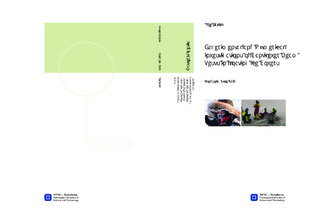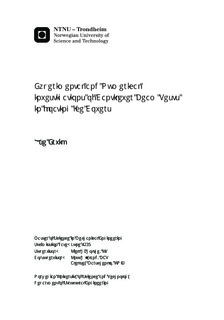| dc.description.abstract | Offshore activity in Arctic waters has become a propelling interest in the industry, bringing new challenges for structural design. Structures situated in the Arctic ocean must withstand loads from ice, amongst other challenges such as remoteness, low temperatures and harsh weather. Floating ice covers can crush or break when interacting with offshore structures. For sloping structures, ice mostly fails when bending, making the flexural strength the key parameter. The objective of this thesis was to investigate the cantilever beam test, for determining flexural strength of sea ice covers. Special emphasis was given to the impact of spatial variations of elastic modulus through the ice thickness on flexural strength.Two scientific expeditions were designed and executed for this work. The first expedition went to Svea bay in Van Mijenfjorden on Spitsbergen, between the 05th and 16th of March 2013. The second expedition was performed on the research vessel Lance, travelling in the Barents sea south east of Edgeøya in the Svalbard archipelago, between the 25th of April and the 04th of May. Applied bending moments for cold and warm ice seems to be similar and independent of temperature and the size of the beam. Because of this; previous flexural strength calculations have not taken into account variations of ice properties in the vertical direction. Stress fields have been assumed to be linearly distributed across the ice thickness, independent of the type of ice. Experimental results form the work presented in this thesis shows that; the elastic modulus seems to variate through the ice thickness in the same manner as the temperature. For cold ice the effect of this is that local stresses in the top ice layer and hence the flexural strength is highly underestimated. The main importance of these findings for structural design seems to be the failure mode in sea ice. The work presented in this thesis endorse the appearance that cold ice is brittle and warm ice is ductile or quasi-brittle. Additionally, the effect of the water support was studied by employing the Winkler foundation. Numerical analysis showed that the flexural strength including the Winkler foundation was within 99\% of the flexural strength neglecting the water support. This indicates that the water foundation can be neglected from flexural strength calculations rightfully. | nb_NO |

